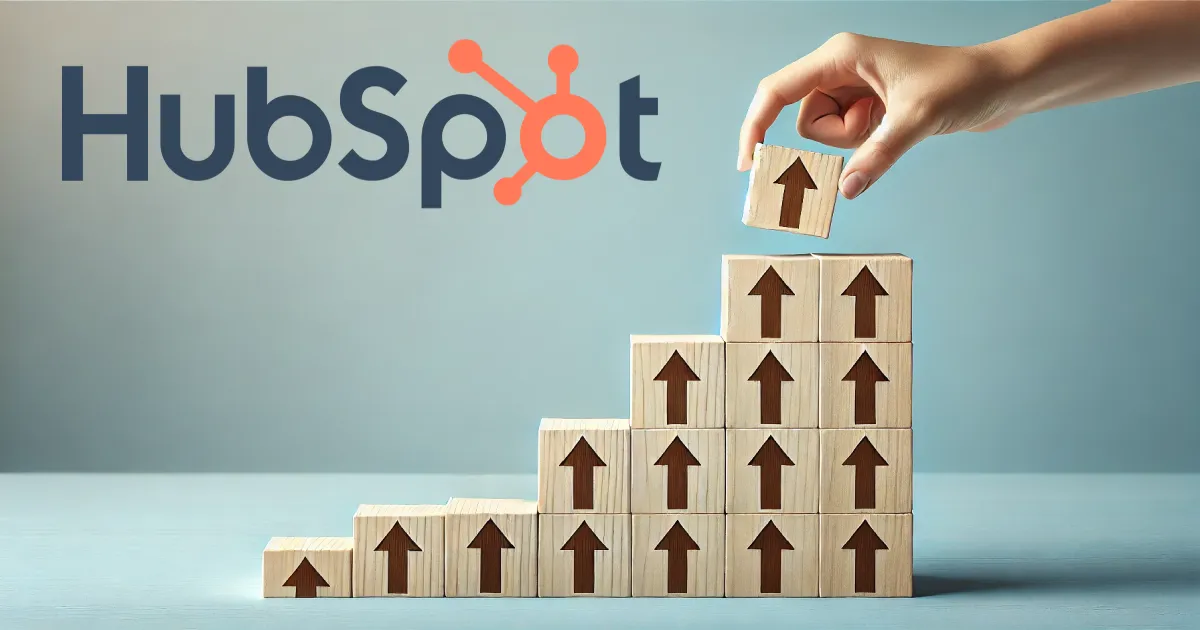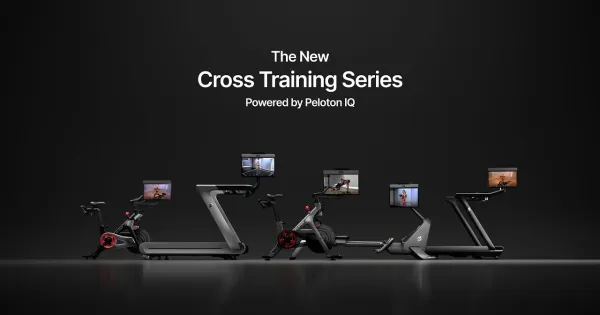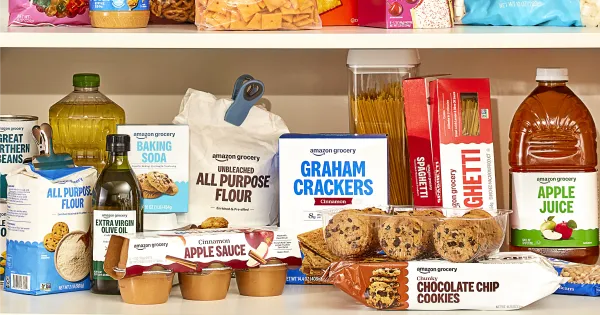5 Steps to Scale Your Business with HubSpot

Scaling a business is a major achievement that brings new challenges, including the need to manage increased demand while maintaining quality. To achieve this, businesses must adopt the right tools, strategies, and resources. One of the most effective solutions for companies looking to scale is HubSpot, an all-in-one CRM platform that streamlines operations by integrating marketing, sales, customer service, and more.
HubSpot provides the essential features and automation needed to support growth while keeping processes efficient and manageable. In this guide, we’ll explore 5 key steps to scaling your business with HubSpot, showing you how to leverage its tools for optimal success.
Step 1) Centralize Your Data with HubSpot CRM

Importance of Centralizing Data
When scaling a business, one of the biggest challenges is managing an ever-growing amount of data. Without a centralized system, customer information can become scattered across different departments, making it difficult to maintain consistency and efficiency. A CRM system like HubSpot solves this problem by acting as a unified hub where all customer and prospect data is stored and accessible.
Centralizing your data enables:
- Better decision-making: With all your data in one place, you can make data-driven decisions that will fuel growth.
- Improved collaboration: Your teams (sales, marketing, and customer service) can work more effectively when they have access to the same customer information.
- Increased productivity: Centralized data means less time wasted searching for information and more time spent acting on it.
How HubSpot CRM Helps
HubSpot’s free CRM system is designed to simplify the management of customer relationships, making it an ideal solution for businesses looking to scale. It offers an intuitive interface that provides a 360-degree view of your customers, allowing you to keep track of interactions, deals, and sales pipelines in real-time.
Key Features to Utilize
- Contact Management: HubSpot CRM allows you to store and manage all customer and prospect data, tracking each interaction to ensure nothing falls through the cracks.
- Pipeline Management: Visualize your sales pipeline, track deals, and automate follow-ups.
- Customizable Dashboards: Create detailed reports to analyze the performance of your teams, campaigns, and processes.
- Integration with Other Tools: HubSpot CRM integrates seamlessly with tools like Gmail, Outlook, and other marketing software, making it easy to sync communications and data.
Step 2) Automate Your Marketing Processes

The Role of Marketing Automation in Scaling
As your business grows, so will your marketing needs. To maintain efficiency and consistency while scaling, marketing automation is essential. Automating repetitive tasks such as email marketing, social media posting, and lead nurturing frees up time for your team to focus on high-impact activities like content creation and strategy development.
HubSpot's Automation Features
HubSpot is renowned for its robust marketing automation tools, which help businesses create sophisticated workflows, segment contacts, and deliver personalized experiences at scale. These tools include:
- Email Marketing Automation: Automate your email campaigns to send personalized messages at the right time based on customer behavior.
- Lead Scoring: Automatically assign scores to leads based on their engagement, ensuring your sales team prioritizes the hottest prospects.
- Social Media Scheduling: Schedule posts in advance, allowing you to maintain a consistent social presence without manually posting.
- Workflow Automation: Set up custom workflows to nurture leads, trigger actions based on user behavior, and more.
Best Practices for Automation
- Personalize where possible: Automation doesn't mean losing the personal touch. Use data to tailor your automated communications to individual customer preferences.
- Segment your audience: Create different workflows for various customer segments to ensure your messaging is relevant to each group.
- Monitor and optimize: Regularly review the performance of your automated campaigns to identify areas for improvement. HubSpot’s reporting tools make this process straightforward.
Step 3) Optimize Lead Management and Nurturing

Importance of Lead Management
Efficient lead management is vital to scaling because it ensures that no opportunity is missed. As your business grows, you’ll receive more leads, and having a system in place to manage, prioritize, and nurture them effectively is crucial.
Using HubSpot for Effective Lead Nurturing
HubSpot offers a suite of lead management tools that allow you to track, nurture, and convert leads with ease. The Lead Management Dashboard provides a centralized view of all leads, where they are in the sales funnel, and what actions are being taken.
- Lead Segmentation: HubSpot lets you segment your leads based on various criteria such as demographics, engagement, and buying behavior. This segmentation helps you send targeted messages that are more likely to convert.
- Email Sequences: Automate email follow-ups with sequences, ensuring timely outreach to nurture leads at every stage of the funnel.
- Lead Nurturing Workflows: Create workflows that move leads through the sales funnel by sending them relevant content based on their behavior and stage in the buying process.
How to Track and Improve Conversion Rates
HubSpot’s CRM and reporting tools give you clear visibility into your lead conversion rates. You can track:
- Engagement Metrics: Track how leads interact with your website, emails, and social media posts to understand what’s working.
- Funnel Analytics: See how leads move through your funnel and where drop-offs occur, allowing you to refine your strategy.
- A/B Testing: Use A/B testing to optimize your emails, landing pages, and CTAs, ensuring you’re using the most effective versions.
By consistently analyzing these metrics, you can adjust your tactics to improve conversion rates and scale your business more effectively.
Step 4) Leverage HubSpot’s Sales Tools for Better Efficiency

The Connection Between Scaling and Sales Efficiency
When scaling, increasing sales volume without sacrificing quality is key. This requires your sales team to work smarter, not harder. By leveraging HubSpot’s sales tools, you can streamline the sales process, reduce manual tasks, and give your team the tools they need to close more deals efficiently.
Sales Tools HubSpot Offers
- Sales Pipeline Management: HubSpot’s visual sales pipeline lets you track deals in real-time, helping you identify bottlenecks and opportunities for improvement.
- Email Templates and Tracking: Save time with customizable email templates, and track email opens and clicks to understand what resonates with prospects.
- Meeting Scheduling: HubSpot’s scheduling tool eliminates back-and-forth emails by allowing prospects to book time directly on your calendar.
- Sales Sequences: Automate follow-up emails and tasks, ensuring that no prospect is left unattended.
Techniques to Improve Sales Team Performance
- Implement Deal Stages: Customize your sales pipeline by adding deal stages that reflect your unique sales process. This helps your team stay organized and focused on closing deals.
- Use Sales Playbooks: HubSpot allows you to create playbooks with best practices, scripts, and resources, ensuring your team consistently follows the most effective strategies.
- Monitor Performance with Reports: HubSpot’s sales reporting tools provide detailed insights into your team’s performance, allowing you to identify high-performing reps and areas for improvement.
By using HubSpot’s sales tools effectively, you can empower your sales team to close more deals faster and drive scalable growth.
Step 5) Streamline Customer Service and Experience

Why Customer Experience Matters When Scaling
Scaling isn’t just about acquiring new customers; it’s also about retaining and delighting your existing ones. Customer service plays a crucial role in this, as a positive experience can lead to repeat business and referrals. Conversely, poor service can damage your reputation and hinder growth.
HubSpot’s Customer Service Tools
HubSpot’s Service Hub is designed to help businesses provide exceptional customer service at scale. Key features include:
- Help Desk: Track, organize, and manage customer issues from a single dashboard, ensuring timely responses.
- Live Chat and Bots: Provide real-time support to customers, and use chatbots to handle common queries automatically.
- Knowledge Base: Build a self-service knowledge base that allows customers to find answers to common questions without contacting support.
- Customer Feedback Tools: Gather feedback through surveys to continuously improve your customer experience.
Maintaining Customer Satisfaction at Scale
To ensure that your customer service remains strong as you grow, consider these best practices:
- Automate where possible: Use chatbots, workflows, and email automation to handle routine tasks and free up your team to focus on more complex issues.
- Prioritize customer feedback: Regularly collect and act on customer feedback to identify areas for improvement.
- Invest in self-service: By creating a robust knowledge base, you can empower customers to solve issues on their own, reducing the burden on your support team.
By using HubSpot’s Service Hub, you can streamline your customer service operations, ensuring that your customers remain satisfied and loyal as your business scales.
Final Thoughts
Scaling a business comes with unique challenges, but with the right tools and strategies in place, it can be a smooth and rewarding process. HubSpot’s all-in-one platform provides everything you need to manage your marketing, sales, and customer service efforts effectively. By following the 5 steps outlined in this guide—centralizing your data, automating your marketing, optimizing lead management, leveraging sales tools, and streamlining customer service—you can set your business up for sustainable, scalable growth.
Whether you’re a small business ready to expand or an established company looking to refine your processes, HubSpot offers the tools and insights needed to scale successfully.
Key Takeaways
| Step | Key Takeaways |
|---|---|
| 1. Centralize Data with HubSpot CRM | - Store all customer info in one place for better decisions and teamwork. - Use contact management, pipeline tracking, and integrations. |
| 2. Automate Marketing Processes | - Automate tasks like emails and social posts to save time. - Use workflows and lead scoring for personalized marketing. |
| 3. Optimize Lead Management | - Segment and nurture leads effectively with HubSpot. - Track performance and improve conversion rates. |
| 4. Use HubSpot’s Sales Tools | - Streamline sales with pipeline management and automated follow-ups. - Use playbooks to boost team efficiency. |
| 5. Streamline Customer Service | - Improve service with HubSpot’s help desk, live chat, and feedback tools. - Automate support and maintain high satisfaction. |





